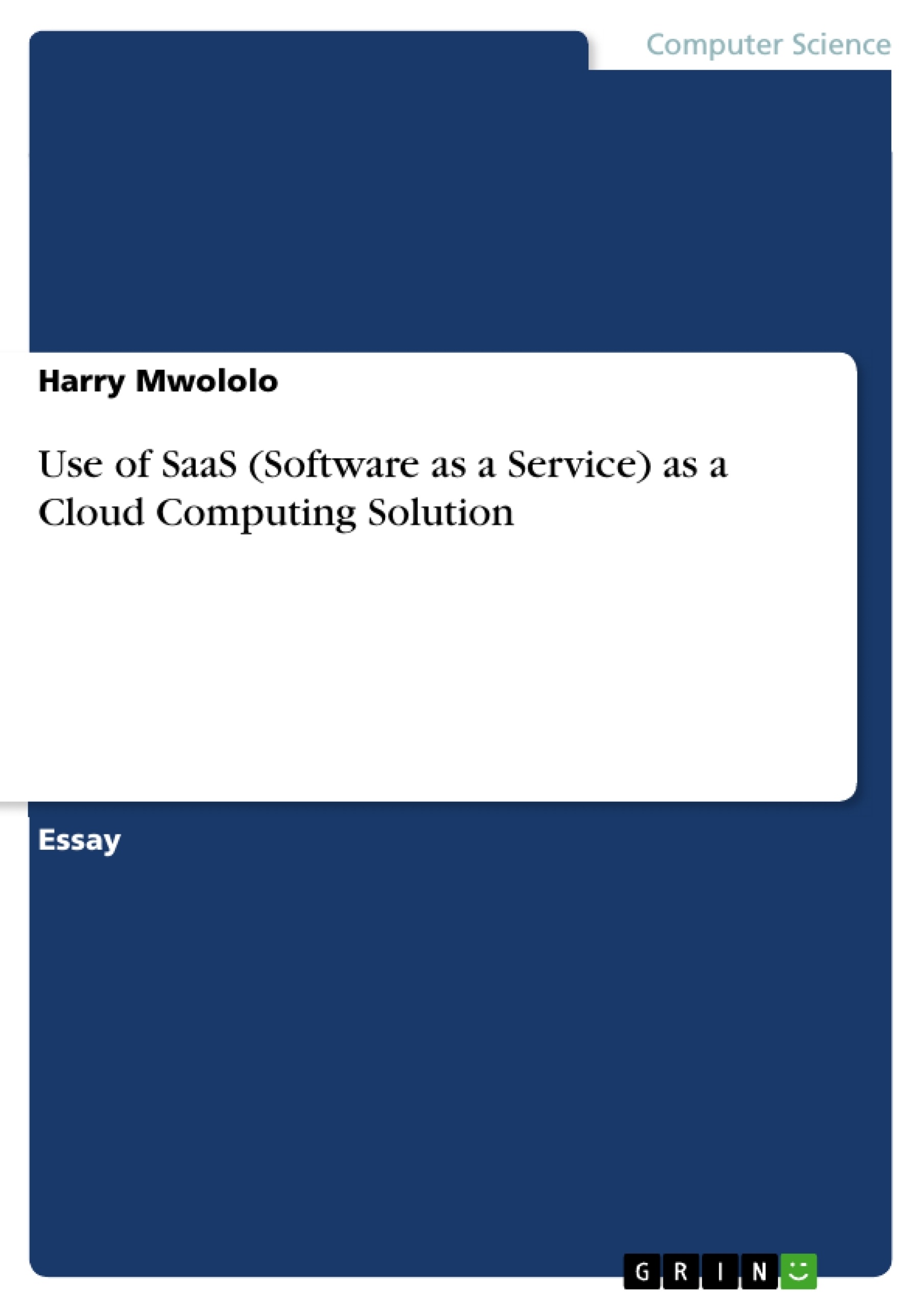Customer satisfaction has been the key competitive strategy of Figura Leisure Centre. However, there is no clear information management system to help them achieve this. Doing the work manually is quite ineffective and time consuming. The organization is losing revenues because of poor management of data and communication system. There is no customer information and follow up on payments by staff is quite a challenge.
Proper communication among the staff is also missing. This makes it hard for the staff to respond to customer needs promptly and in the right manner. Customer feedback is also hard to get. Data processing, storage and communication are hard because, if done at all, it is through the conventional approach. This calls for the business to adopt cloud computing’s Software as a Service system to enhance communication internally and advance interaction with external customers.
SaaS is quite suitable for small business and organizations like Figura Leisure Centre. With the use of SaaS there will be change in the way the organization conducts its business. When used appropriately, SaaS will decrease use of physical infrastructure, increased implementation speed, and recommendable client experience. SaaS will also save some upfront expenses. SaaS system would help the business in compiling customer information across various channels, and on point of contact between the organization and the customer.
Inhaltsverzeichnis (Table of Contents)
- Introduction
- Cloud Computing vs. Conventional IT solutions
- Key Benefits of Cloud Computing
- Cost
- Speed
- Global Scaling
- Productivity
- Performance
- Reliability
- Disadvantages of Clouding
- Forms of Cloud Services: SaaS, IaaS and PaaS
- Advantages of SaaS over the others
- Use of Free Client Software
- Easy to Mobilize Workforce
- Rival Competitors in the Industry
- Adopting Salesforce.com as a SaaS based CRM for FLC
- Benefits of Salesforce.com to FLC
- Challenges of adopting Salesforce.com
- References
Zielsetzung und Themenschwerpunkte (Objectives and Key Themes)
This document explores the concept of cloud computing and its advantages for businesses, specifically focusing on Software as a Service (SaaS) and its implementation in the context of Figura Leisure Centre. The document examines the benefits and challenges of adopting cloud computing, including the advantages of SaaS over other cloud service models.
- Cloud Computing: Its advantages and disadvantages compared to traditional IT solutions.
- Software as a Service (SaaS): Its benefits and implementation in the context of business operations.
- Customer Relationship Management (CRM) Systems: The role of SaaS-based CRM systems in improving customer service and communication.
- Data Management and Communication: How cloud computing can enhance data management, communication, and collaboration within an organization.
- Cost-Effectiveness and Efficiency: The economic benefits of cloud computing, including reduced costs, increased productivity, and improved efficiency.
Zusammenfassung der Kapitel (Chapter Summaries)
The introduction discusses the challenges faced by Figura Leisure Centre due to their lack of an effective information management system. This leads to the exploration of cloud computing and SaaS as potential solutions for improving communication, data management, and customer service.
The chapter on "Cloud Computing vs. Conventional IT solutions" contrasts the features and costs of cloud computing with traditional IT solutions. It highlights the flexibility, accessibility, and scalability offered by cloud computing.
The "Key Benefits of Cloud Computing" chapter delves into various advantages, including cost savings, increased speed, global scalability, improved productivity, enhanced performance, and improved reliability.
The chapter on "Disadvantages of Clouding" acknowledges criticisms and challenges associated with cloud computing, such as concerns over cost, security, and potential vulnerabilities.
Schlüsselwörter (Keywords)
The document focuses on the key terms and concepts of cloud computing, Software as a Service (SaaS), Customer Relationship Management (CRM), data management, communication, cost-effectiveness, and efficiency. The document explores the application of these concepts in the context of Figura Leisure Centre, highlighting the potential benefits of adopting cloud computing solutions.
- Quote paper
- Harry Mwololo (Author), 2017, Use of SaaS (Software as a Service) as a Cloud Computing Solution, Munich, GRIN Verlag, https://www.grin.com/document/384391




